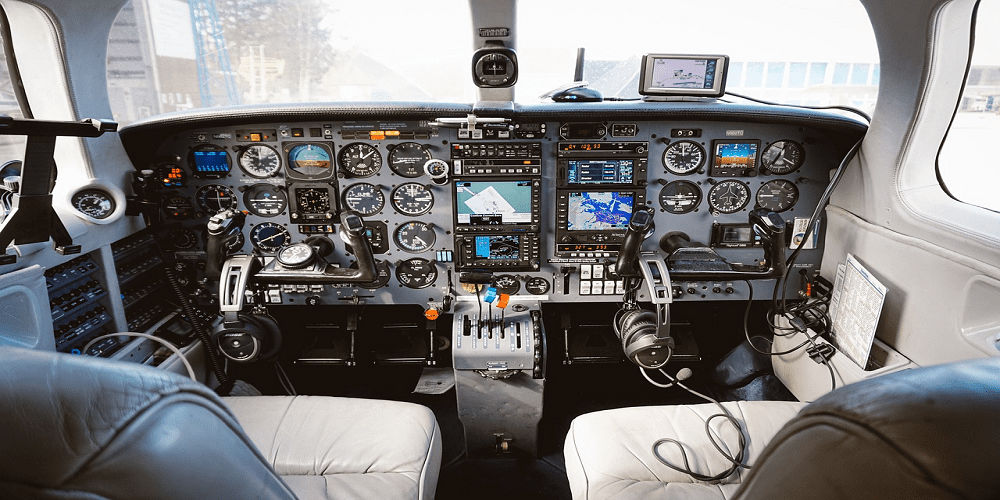Welcome to the future of aviation, where self-piloted aircraft are no longer a distant dream but a rapidly approaching reality. The autonomous revolution in the sky is underway, and it’s time to buckle up and prepare for an exhilarating journey through the key technologies that are shaping this groundbreaking shift. From advanced artificial intelligence systems to cutting-edge sensor technology, we will explore how these innovations are set to transform air travel as we know it.
Introduction
Self-piloted aircraft are a new category of aircraft that are capable of flying without a human pilot. These aircraft are controlled by a computer system that is programmed to fly them autonomously. Self-piloted aircraft are not yet commercially available, but they are being developed by several companies and organizations.
The key technologies that are enabling self-piloted aircraft include sensors, artificial intelligence, and electric propulsion. Sensors allow the computer system to gather data about the environment around the aircraft. This data is used by the artificial intelligence algorithms to navigate the aircraft. Electric propulsion provides the power for the sensors and artificial intelligence system, as well as for the flight control surfaces.
Self-piloted aircraft have the potential to revolutionize aviation. They could enable new types of missions and operations that are not possible with traditional piloted aircraft. For example, self-piloted aircraft could be used for long-duration surveillance missions or package delivery. They could also be used in difficult or dangerous environments, such as near volcanoes or in areas with high winds.
Key Technologies Behind Autonomous Planes
As autonomous technology continues to develop and become more refined, a number of different key technologies are playing an important role in shaping self-piloted aircraft. Some of the most important of these technologies include:
Advanced sensors and data processing: One of the most important aspects of any autonomous system is its ability to accurately perceive and interpret its surroundings. This is especially true for autonomous aircraft, which need to be able to detect and avoid obstacles at all times. A variety of different sensors are used for this purpose, including lidar, radar, and cameras. Data from these sensors is processed by powerful computers onboard the aircraft in order to generate a real-time 3D map of the environment.
Artificial intelligence: A central component of any autonomous system is its artificial intelligence (AI) software. This software is responsible for making decisions based on the data collected by the sensors. In the case of autonomous aircraft, the AI software needs to be able to make split-second decisions in order to avoid obstacles and maintain control of the aircraft.
Powerful computing hardware: In order for an autonomous system to function properly, it needs access to powerful computing hardware. This hardware is used for a variety of purposes, including running the AI software, processing sensor data, and controlling the various systems onboard the aircraft.
Sensors and Navigation Systems
The future of aviation is autonomous. Self-piloted aircraft are already in use today, and the technology is advancing rapidly. The key technologies that are making this possible are sensors and navigation systems.
Sensors allow the aircraft to “see” and navigate around obstacles. They include radar, lidar, and cameras. Navigation systems use GPS and other data to plot a safe course for the aircraft.
These technologies are not only making autonomous flight possible; they are also making it safer. By removing the need for a human pilot, self-piloted aircraft can avoid many of the risks associated with flying. This includes weather conditions, mechanical failures, and even terrorist attacks.
The benefits of autonomous flight are clear. But there are still some challenges to overcome before self-piloted aircraft can become the norm. One of the biggest challenges is regulatory approval. Current regulations require a human pilot on board at all times. But as technology continues to mature, it is likely that these regulations will change.
Another challenge is public opinion. Many people are still uneasy about flying in an aircraft without a human pilot. But as more people experience autonomous flight firsthand, that opinion is likely to change.
Artificial Intelligence and Machine Learning
Artificial intelligence (AI) is playing an increasingly important role in the development of autonomous aircraft. AI algorithms can be used to process data from a variety of sensors, identify patterns, and make decisions. Machine learning (ML) is a subfield of AI that focuses on creating algorithms that can learn from data and improve over time.
ML algorithms have been used to develop systems that can autonomously navigate aircraft through complex environments. These systems can learn to avoid obstacles, predict weather patterns, and find the most efficient route to their destination.
The use of AI and ML in autonomous aircraft is still in its early stages, but the potential benefits are significant. Autonomous aircraft could reduce fuel consumption and emissions, improve safety, and increase efficiency. As the technology matures, we are likely to see more and more self-piloted aircraft in the skies.
Automated Flight Control Systems
In the near future, we will see a revolution in the skies as autonomous flying vehicles become a reality. There are many technologies that are key to making this happen, but perhaps the most important are automated flight control systems.
These systems will be responsible for controlling the aircraft and keeping it on course. They will need to be incredibly accurate and reliable, as even a small error could result in a crash.
The good news is that there has been significant progress made in this area in recent years. Automated flight control systems are already being used in some military drones, and they are becoming more sophisticated all the time.
As these systems continue to develop, we will see more and more self-piloted aircraft take to the skies. This technology has the potential to change aviation forever, making it safer, more efficient, and more accessible than ever before.
Potential Applications and Challenges for Autonomous Planes
As the technological capabilities of autonomous aircraft continue to develop, there are a number of potential applications for these self-piloted planes. One potential application is using autonomous aircraft for commercial cargo transportation. This could provide a more efficient and cost-effective way to transport goods, as well as freeing up human pilots for other tasks. Another potential application is using autonomous planes for agricultural purposes, such as crop dusting or seed planting. This could provide a more precise and efficient way to carry out these tasks while also reducing the risk to human workers.
However, there are also a number of challenges that need to be addressed before autonomous aircraft can be widely adopted. One challenge is ensuring the safety of these planes. Autonomous aircraft will need to demonstrate a high level of safety before people will be willing to fly on them or allow them to operate in populated areas. Another challenge is developing the infrastructure needed to support autonomous aircraft, such as air traffic control systems that can manage large numbers of these planes flying in close proximity to each other. There are regulatory challenges that need to be addressed in order to allow autonomous aircraft to operate in airspace alongside traditional manned aircraft.
Conclusion
Autonomous revolutions in the sky are a rapidly developing area of technology. Self-piloted aircraft are now close to becoming commonplace, thanks to advances in AI and sensor technologies. The applications for such aircraft range from passenger transportation and package delivery to search and rescue missions and more. As the benefits become clearer, it’s likely that autonomous aircraft will soon take over many roles traditionally held by human pilots, ushering in an era of unprecedented convenience and efficiency for both airlines and passengers alike.



































